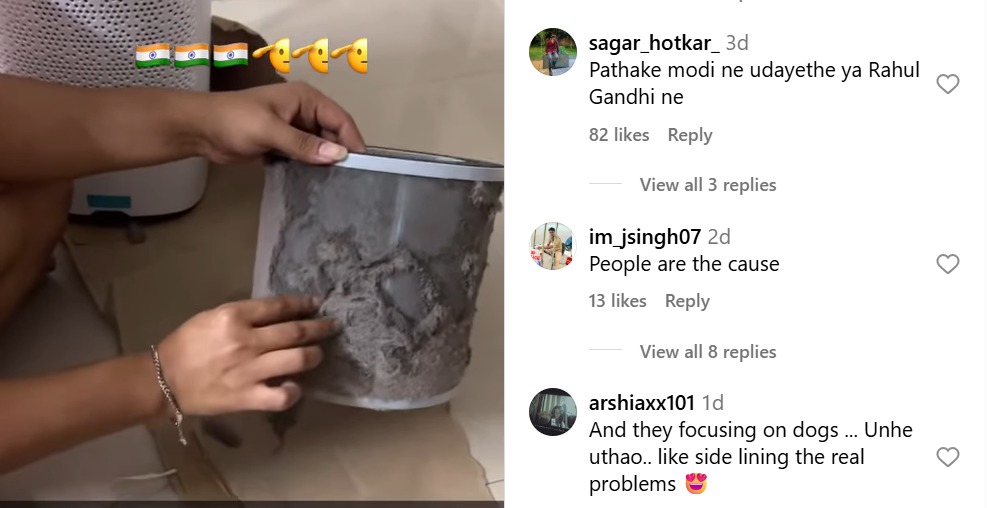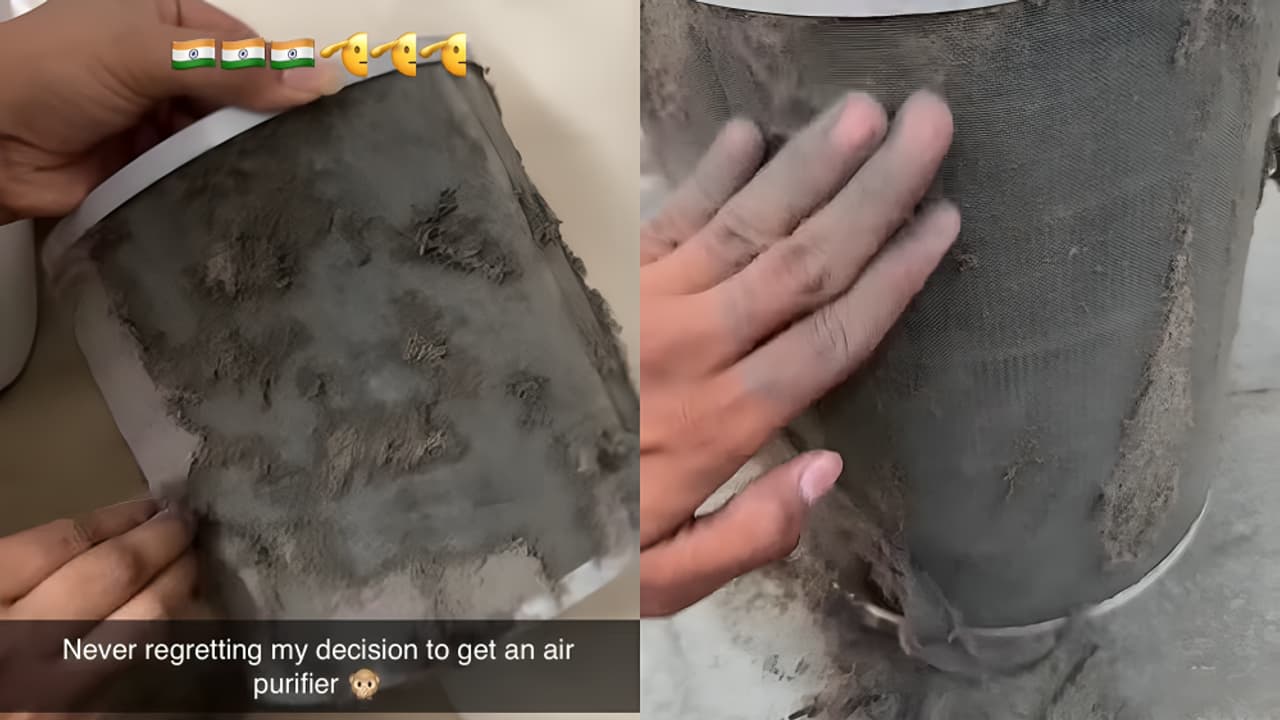Delhi woke up to heavy smog on Monday, with the National Capital Territory of Delhi AQI at 345, firmly in ‘very poor’ category. Videos of home air purifiers coated in brown-black dust circulated online, prompting outrage.
On Monday morning the city’s air was visibly grey and heavy. At 8 am the overall AQI was recorded at 345, slightly down from 391 the previous day. According to the Central Pollution Control Board (CPCB), several monitoring stations logged very high readings: Anand Vihar at 379, Alipur at 360, Ashok Vihar at 367, Bawana at 412, Burari Crossing at 389 and Punjabi Bagh at 324. Other spots such as Okhla Phase 2 and RK Puram also hovered above the 340-370 range. The CPCB AQI classification places 301-400 as ‘very poor’. Many people in Delhi have taken to social media to reveal the condition of their air purifiers as capital battles the dirty air.
Visible health impact and home dust shock
Residents reported coughing, eye-irritation and breathing difficulty. One Delhi resident, Rahul, told ANI: “This is not fog, this is pollution. We are facing breathing difficulties and eye irritation.” Several social-media clips showed home air purifiers opened to reveal filters thickly coated in brown and black dust, stark evidence of the toxic air indoors as well as outside. The clips triggered strong public reactions.
Public reaction: outrage, blame and lifestyle questions
The air-purifier videos provoked thousands of comments. Many criticised how life in Delhi is lived with toxic air, others turned their ire on the government, while some pointed to people’s own lifestyle choices:
“Mogli hai toh namkeen hai; Godi hai toh mumkin hai 👏👏”
“Brought to you by the farmers of Punjab; Pathake Modi ne udayethe ya Rahul Gandhi ne”
“It’s better to leave the country for fresh air”
“People’s fault is also there in contribution towards pollution not only Govt look the traffic of Entire NCR🙂”
“Is it really the government’s fault! Our people aren’t even ready to use public transport, all need personal vehicles… we need AC everywhere, we need all the luxury then we expect from the government that it will reduce the pollution”
The mix of anger, blame and self-reflection indicates how complex the issue feels to residents.


Protest at India Gate and the government’s response
As frustration grew, people took to the streets. On Sunday hundreds gathered at India Gate in Delhi holding placards and inhalers, demanding immediate action on what they called an “air emergency”. New Delhi district DCP Devesh Kumar Mahla stated that India Gate is not a designated protest site; the proper place is Jantar Mantar as per the Supreme Court of India’s directions. He added that India Gate sees regular family visitors and VIP routes, which complicates protests there.
Scroll to load tweet…
Scroll to load tweet…
Why the air is so bad now
This seasonal spike in pollution comes from several interconnected causes:
- Crop-stubble burning in neighbouring states sends smoke into Delhi-NCR and worsens the haze.
- Vehicle emissions, industry and construction dust add to the mix.
- Weather patterns: lower wind speed, cooler temperatures and calm air trap pollutants near the surface.
Controlled fireworks and firecrackers around event times add short-term spikes. For example, on October 21, following Diwali festivities, Delhi recorded AQI around 442 in places.
When pollution enters the “very poor” category (AQI 301-400), health risks rise significantly:
- Everyone may begin to experience health effects.
- Sensitive groups (children, elderly, those with respiratory conditions) face higher risk of serious issues.
- Outdoor activities should be limited: morning walks, jogging, open-air games can become dangerous.
- Indoor air may also become polluted if filters of purifiers show thick dust, as seen in videos.
Doctors often advise wearing masks (respirators rated N95 or equivalent), using air-purifiers indoors, avoiding unnecessary outdoor travel, and keeping windows closed when air outside is heavy.
What must be done: Short-term and long-term
Short-term:
- The government can enforce construction activity bans, increase parking charges, restrict heavy vehicles in peak pollution hours.
- People can shift travel to public transport or car-pooling.
- Use masks, run air-purifiers at home, limit outdoor exposure in early morning and night.
Long-term:
- Reducing stubble-burning needs firm regulation, alternative crop-residue use systems for farmers, and inter-state coordination.
- Upgrading vehicle fleets, cleaner fuels, reducing traffic congestion.
- Controlling dust from construction via proper coverings, wind-breaks.
- Increasing green cover, promoting clean energy and tighter industrial emission norms. The public protests show demand for stronger action — but lasting improvement will need sustained policy plus citizen behaviour changes.
Although the AQI dropped from 391 to 345, the category remains ‘very poor’ and still far from safe. A slight dip does not mitigate the cumulative health risk of several days of heavy pollution. Residents remain at risk, and the burden has already built up.
(With ANI inputs)
